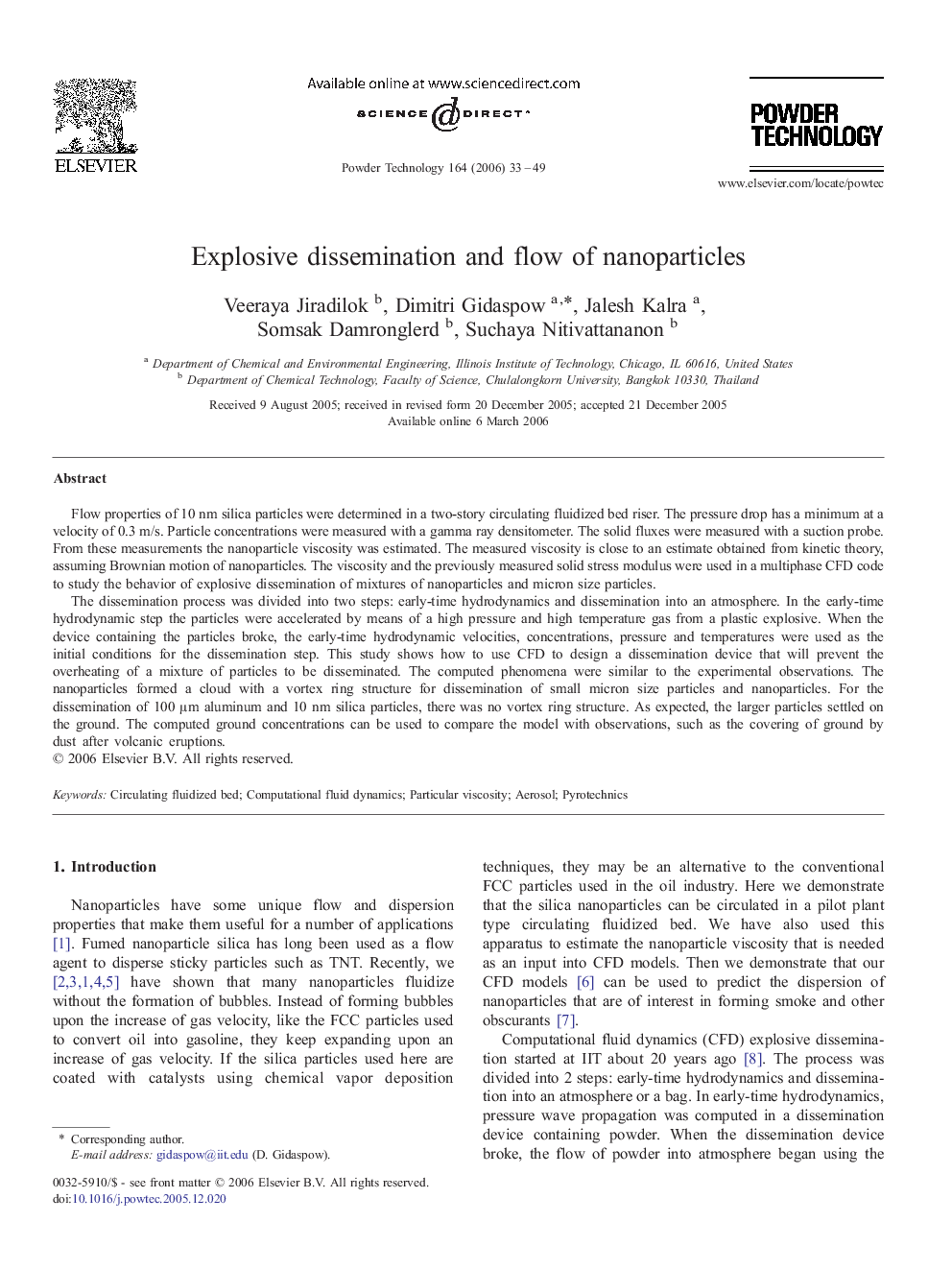| Article ID | Journal | Published Year | Pages | File Type |
|---|---|---|---|---|
| 239421 | Powder Technology | 2006 | 17 Pages |
Flow properties of 10 nm silica particles were determined in a two-story circulating fluidized bed riser. The pressure drop has a minimum at a velocity of 0.3 m/s. Particle concentrations were measured with a gamma ray densitometer. The solid fluxes were measured with a suction probe. From these measurements the nanoparticle viscosity was estimated. The measured viscosity is close to an estimate obtained from kinetic theory, assuming Brownian motion of nanoparticles. The viscosity and the previously measured solid stress modulus were used in a multiphase CFD code to study the behavior of explosive dissemination of mixtures of nanoparticles and micron size particles.The dissemination process was divided into two steps: early-time hydrodynamics and dissemination into an atmosphere. In the early-time hydrodynamic step the particles were accelerated by means of a high pressure and high temperature gas from a plastic explosive. When the device containing the particles broke, the early-time hydrodynamic velocities, concentrations, pressure and temperatures were used as the initial conditions for the dissemination step. This study shows how to use CFD to design a dissemination device that will prevent the overheating of a mixture of particles to be disseminated. The computed phenomena were similar to the experimental observations. The nanoparticles formed a cloud with a vortex ring structure for dissemination of small micron size particles and nanoparticles. For the dissemination of 100 μm aluminum and 10 nm silica particles, there was no vortex ring structure. As expected, the larger particles settled on the ground. The computed ground concentrations can be used to compare the model with observations, such as the covering of ground by dust after volcanic eruptions.
